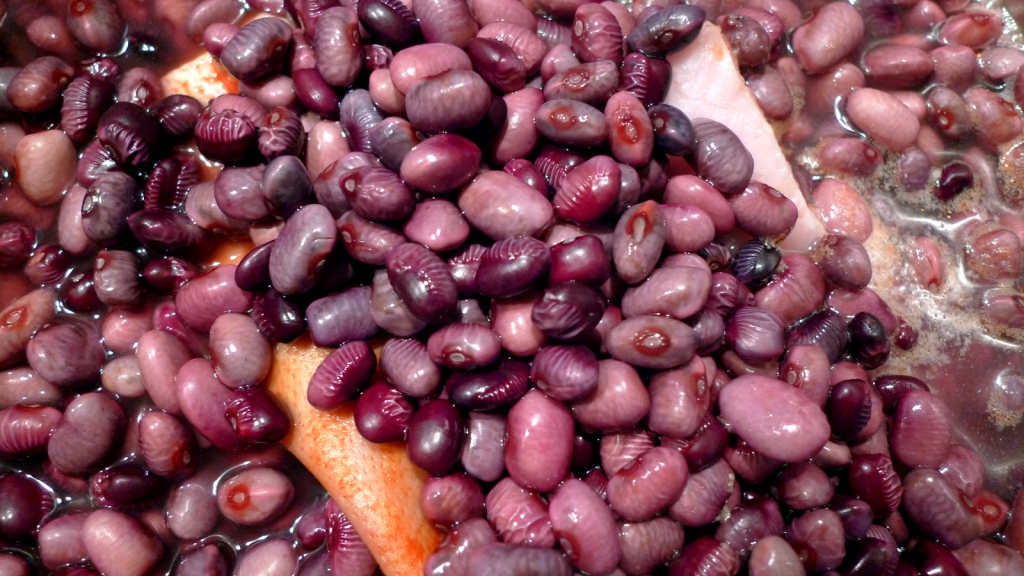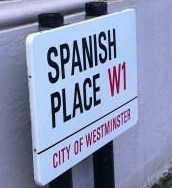Ten years ago today I wrote about what was probably the UK’s first Spanish restaurant: the famous Martinez Spanish Restaurant, which opened in 1923 in Swallow St, close to Piccadilly Circus. The wonderful comments on that post will give you a flavour of just how fondly Martinez’s is still remembered, more than 35 years after it closed in 1988.

Source: Google Maps (2022)
Ten years ago, I said that while I believed Martinez’s was the first Spanish restaurant in London, I couldn’t be completely sure. I still haven’t found any evidence to the contrary, but I have discovered another venue that might have been London’s earliest public venue for sampling Spanish cuisine: Carlos Martorell’s Spanish guesthouse at 90 Guilford Street, close to Russell Square, which opened in 1863.
Researching the guesthouse and its history has been a little like clutching at shadows. Like the vast majority of London’s 19th-century Spanish businesses, Martorell’s establishment has left only the faintest archival trail. Uncovering the stories of these fascinating but often ephemeral ventures, means seeking out a mosaic of passing references in sources such as newspapers, trade directories, rate books, censuses and (if we are very lucky) memoirs and personal accounts.
Carlos/Charles Martorell and his guesthouse
Our host, Carlos Ramon Martorell, was the London-born son of the Mallorcan baker, confectioner and pâtissier Ramon Martorell, who arrived in London in around 1825 and deserves a blog of his own. Carlos was born in around 1833 and grew up living above his father’s bakeries, first on Albany Street near Regents Park and later at Upper Seymour Street close to Hyde Park, part of the Portman Estate. Carlos, also known as Charles, worked alongside his father and may even have taken over the business while his parents spent time in Spain. The 1861 census records ‘Charles R Martorell’ and his Liverpool-born wife Amina at Upper Seymour Street, where his profession is recorded as ‘Confectioner employing 3 men.’

© Crown Copyright and Landmark Information Group Limited (2024). All rights reserved. (1870)
After years following in his father’s footsteps, Carlos decided to try something new. In summer 1863, inspired by the growing number of Spanish tourists visiting London and the mini boom in Spanish hotels springing up to host them, he placed a run of adverts in the Spanish newspaper El Pensamiento. The adverts highlighted his pedigree – ‘for many years at the helm of one of London’s most renowned confectioners and patissiers’ – and flagged up his central location and his guesthouse’s combination of comfort and luxury ‘with prices that are no greater than those of the other Spanish establishments’.[1]
Looking for a unique selling point, Carlos leaned in hard to both his kitchen experience and his Spanish connections. Later that year, he ran another advertisement in the Times of London. Very unusually for a British newspaper, the advert was in Spanish. It encouraged visitors to join his Spanish-style open table at Guilford Street:
CASA DE HUESPEDES ESPANOLA – Mesa redonda a las 6 por la tarde comida a la Espanola. Olla podrida todo los Domingos, mesa para caballeros y senoras non residentes en la casa – Carlos R Martorell, 90, Guilford St, Russell Square.[2]
[my translation] SPANISH GUEST HOUSE – Communal dinner at six pm, Spanish-style cooking. Olla podrida every Sunday, open to gentlemen and ladies not resident in the house – Carlos R Martorell, 90, Guilford St, Russell Square.
The olla podrida that Martorell judged would attract homesick Spaniards in London to Guilford Street is a very typical Spanish dish made up of meat, beans or chickpeas, and vegetables. Its name literally means ‘rotten pot’, and like a British hotpot, it is a one-pot dish simmered for many hours.


Martorell’s emphasis on a communal table open to non-residents where he served up a typical and comforting Spanish peasant food distinguish him firmly from his competitors, who generally offered a refined and rather generic French-style menu. One of the visitors attracted to the Spanish home comforts of 90 Guilford Street was the Spanish musician Senor Don D Ymbert (‘from Madrid’), who spent part of the 1863-64 winter season in London and gave the guest house as his address for prospective audience members seeking to buy tickets.[3]
In catering to non-residents, the Guilford Street Casa de Huéspedes is a very early example of something akin to a Spanish restaurant in London, although its intimate nature makes me think of it less as a full-blown restaurant and more as a Spanish table or supper club. It’s hard to know how successful Martorell’s innovation was, but it seems to have survived for no more than two or three years. In 1866 or 1867, Carlos and his family relocated to his wife’s native Liverpool, where he opened a restaurant on Castle Street aimed at the business market and also exhibited mastiffs, including the prizewinning ‘General Prim’ (named for the late Spanish politician).[4]
Carlos might have been an enthusiastic entrepreneur, but he was not a successful one. His Liverpool restaurant went bankrupt in 1871 and he returned with his family to London, where he ran the ‘Surrey Meat Preserving Company,’ managed the Junior Army & Navy Club, went bankrupt again, retired to Leyton in Essex and died in 1883 at the age of just 50. I like to think he would be pleased, if a bit surprised to learn that his Spanish Sunday hotpots might just have staked his claim to a place in London’s culinary history. ¡Buen provecho!
Notes
[1] El Pensamiento Español, 16 Jul. 1863: 4. Original text: ‘D. Carlos Ramon Martorell, quien por muchos años ha estado al frente de una confitería y repostería de las más acreditadas en aquella capital … con precios que no son superiores a los de las demás casas españolas.’
[2] The Times, 31 Oct. 1863: 13.
[3] e.g. Illustrated London News, 28 Nov. 1863: 14. The connection with Ymbert may have been through Carlos’s sister Emily, an up-and-coming soprano, who performed under the name ‘M[ademoise]lle Linas Martorelli’. Emily was exceptionally well-connected in the Spanish musical world; in 1866, she married Gustave García, brother of the celebrated singer María Malibrán and son of the singing teacher Manuel García.
[4] E.g. ‘Bolton Dog Show,’ Field, 8 Jan. 1870: 27, ‘Several of the Mastiffs entered did not put in an appearance, and Mr Martorell’s General Prim had it all his own way, the second prize being withheld’.
